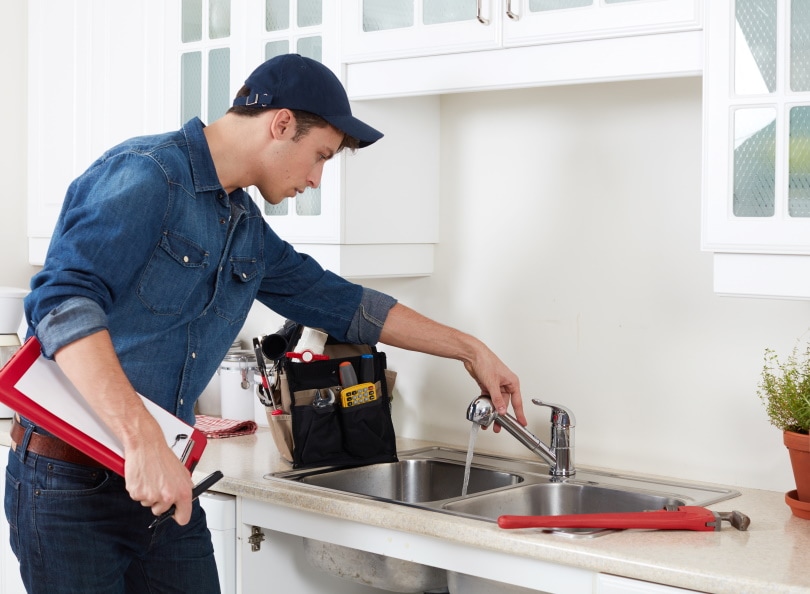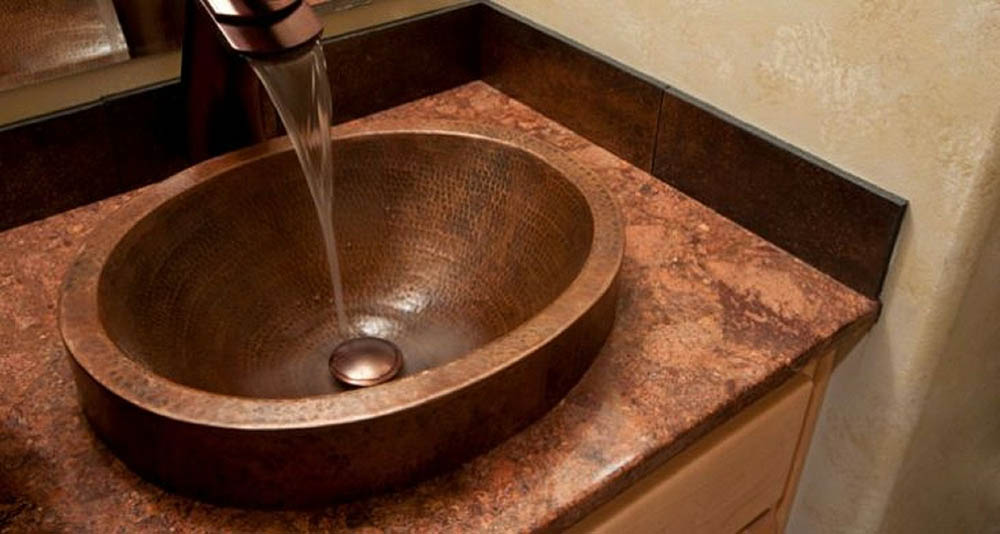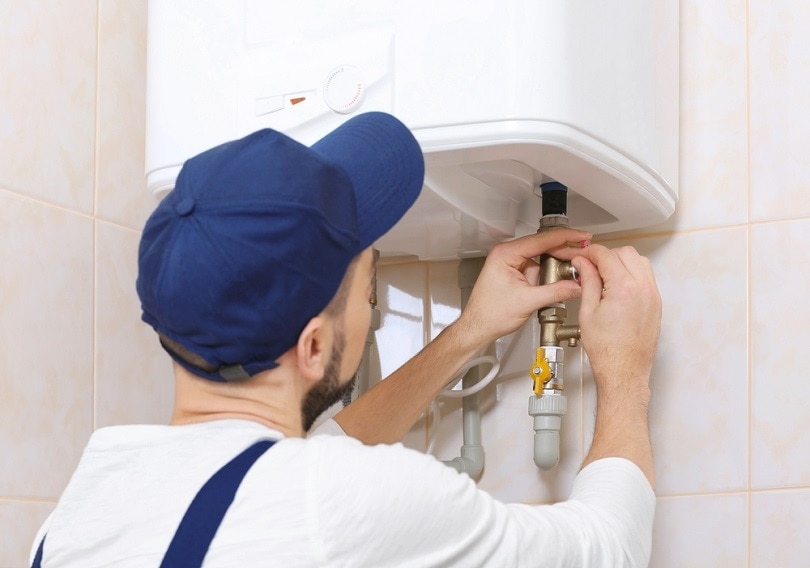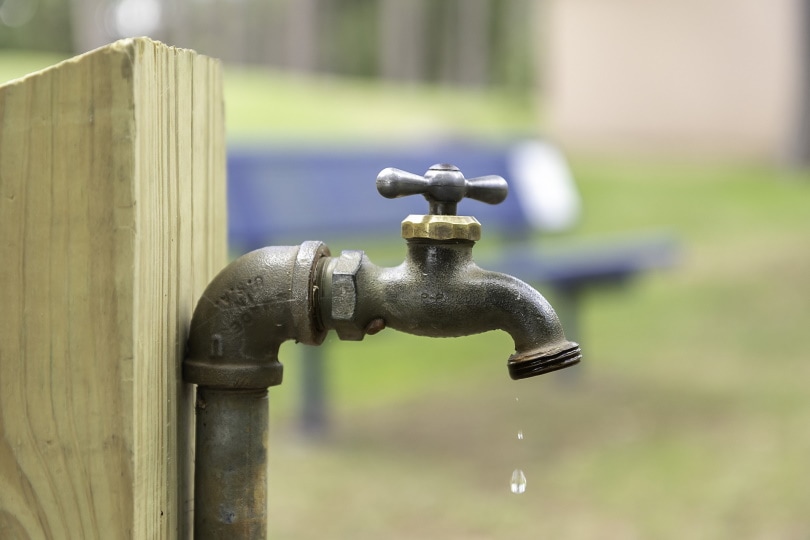Low Water Pressure in the House: 10 Causes and Solutions
-
Pete Ortiz
- Last updated:

Clogging is something that we’ve all experienced once or twice. Leaking is another common issue among American households, and, usually, you can fix that if you’re good with your hands. Or, there’s always the option of calling a plumber. But what if the issue is much bigger than that? What if you’re not getting a proper water pressure level because you’re sharing the pipeline with a neighbor?
Or maybe your borough/city has changed its regulations? These are just some of the potential causes, and today, we’ll talk about it all in great detail. We made a list of the ten most common reasons for abnormally low water pressure and the best solutions. So, if you’re ready to learn what causes low water pressure in the whole house, get it back up and enjoy wholesome showers, let’s dive right in!
The 10 Most Likely Causes of Low Water Pressure in Your House
1. Your Water Supplier is to Blame
If you feel like the water pressure isn’t the same as it used to be, you should do some “detective work”. Ask your closest neighbors whether they’re experiencing the same problems or not. If they are, and it’s been going on for a while, that means the problem is not on your side. That is good news, of course, because you won’t have to spend any time, energy, or money trying to fix it.
Get in contact with the company responsible for supplying water to your house. See if they’re aware of the situation or not. Next, get an estimate on when they’re planning to get the water pressure back up. During an emergency, companies are obligated to restore the water supply within 48 hours.
Therefore, if they claim it’s all good on their side and refuse to take immediate action, you might have to start a petition. Or, you could visit local authorities/give them a call. That usually gets things going. Filing a complaint on your state’s official website is also on the menu, but that usually takes longer.

2. City Regulations Have Changed
Sometimes, it’s not the supplier to blame, but city regulations. If that’s the case, the water provider will have to follow these new rules. This happens rarely, and city officials always send out emails or use other means to let the population know about these changes. They control the citywide piping network from the center (the municipal water system) and the lowered water pressure applies to every single household in the area.
What are your options here? The answer is a water pressure booster. It won’t be exactly cheap ($200–400 for a decent pump), but in the long run, it will be a worthy investment. There are more expensive units out there, but, for the average American home, a standard booster will do just fine. Do keep in mind, though, that you’ll have to pay a plumber to install it (that’s gonna cost you an extra $200–250).
They will be able to quickly assess the size and condition of your pipes and pick a water booster that fits perfectly. How does this device machine work, exactly? Essentially, it “traps” the water coming from your supplier and pumps it into your home’s appliances at a much higher pressure. This is important: in many states, it’s illegal to install a pressure pump directly to the mains water supply, as it can cause damage to the pipes.
3. You’re on a Shared Pipeline
Yes, pipelines in densely populated areas rarely (if ever) supply water to one single house. Instead, they run it into multiple households, and that can be a problem. Say, your neighbor decided to wash their truck this morning, or someone’s watering the flowers with a garden hose. That will immediately drop your water pressure, as you’re all on a joint pipeline.
When it’s one of your family members using water while you’re in the shower, you have the luxury of yelling at them to stop. Well, that (mostly) won’t work with neighbors. The best course of action here would be to slightly change your morning routine (say, shift it for 15 minutes or so) to enjoy proper water pressure. As an alternative, try talking to your neighbor(s) and maybe come to an agreement.
If that doesn’t go well, a water accumulator could work. In some ways, it’s similar to a booster. It works a bit differently, though, and stores volumes of water that’s available to you whenever you need it. That means the water pressure in your pipes won’t depend on whether someone else in the neighborhood is accessing the main supply, or not.

4. You Have a Faulty Pressure Regulator
Alright, so, with the water supplier, city regulator, and water-hungry neighbors out of the way, let’s talk about situations when the problem is on your side. You might not have a pressure regulator per se, but if you do, it could be faulty. Here’s how you check this: grab a standard water pressure gauge and attach it to your outside hose plug/spigot. Next, turn the water on, and the gauge should give you an accurate read on the pressure.
If the pressure regulator claims a higher pressure, but you see that it’s much lower on the gauge, that means the regular if malfunctioning. The #1 job of any pressure-reducing valve is to control the water pressure coming from the supplier and set it to a level that’s safe for your pipes, faucets, and appliances. So, when the regulator is faulty and not getting accurate readings, you end up with lower water pressure, as the PRV isn’t doing anything to boost it.
The only option on the table is a complete replacement of the bad pressure regulator. Don’t worry, it won’t break your bank: they sell these for $30–50 at local stores and online. Call in a plumber to handle the installation for you. They will charge $150–200 for the labor (cutting off 6 inches of pipe, soldering both ends, installing the PRV, and securing it). On average, new water pressure regulators last for five years.
5. The Pipes are Clogged/Congested
You’ve probably thought of this first, as clogging is a very common issue with pipes. It tends to build up in the depth of tubes and pipes. The worst thing about this—even when it’s not a gigantic clog, you’ll still have problems with water pressure. And no, the water, sand, and minerals won’t go away if you crank the faucet up and switch to hot water. Besides, clogging makes it harder for water to heat up.
There’s no way of logically figuring out where exactly the clog is located. That’s why it would be best to ask a professional plumber for help. A quick note: it is NOT recommended to use any chemicals to fight congestion in the pipes. This could be a solution when the clog is somewhere down the drain. And if that doesn’t work, it won’t cause any harm.
However, pouring potentially dangerous fluids/solutions into the pipes that pump water into your house can have bad consequences for your health. And if you, by accident, cross-contaminate different parts of the piping system, that will cost thousands of dollars to fix. So, pay a licensed plumber and let them take care of this for you.

6. The Pipes Are Corroded
Rust is arguably the #1 enemy of any metallic surfaces and parts, including water pipes. But can this really be an issue for your house? It depends on how long the pipes have been in service. The material quality also plays a role here. For example, galvanized steel (a popular material for pipes back in the day) begins to corrode in +/- two decades. Copper is a better material, as it lasts for up to five decades or even more.
Brass sits on top of the ‘food chain”, and will serve for up to seven decades. Older houses are usually equipped with galvanized steel pipes, and that’s why low water pressure is generally a problem with homes from the previous century. This is important: if you added a new, fancy washing machine, or, say, an extra shower or bathtub, that will make old pipes corrode sooner because of the extra pressure.
Some experts recommend using plumber wax or certain types of lubricants. Others swear by vinegar and claim it kills corrosion instantly. However, these are temporary solutions, and you should consider having the pipes properly repaired. That involves cutting out the rusted parts and replacing them with new ones. The average price tag on this service is $1000+, but, again, we’re talking about a long-term investment in your safety and comfort.
7. The Main Shutoff Valve is Half-Closed
For starters, you need to find this valve. Usually, it’s located on the outside; or, it could be attached to the main pipe that runs into your house. As the name suggests, it’s the main valve that allows you to quickly block the water flow in case of an emergency.
Do you see a handle on the valve? Go ahead and turn it counterclockwise as hard as you can (be careful not to break it). In some newer houses, it’s gonna be a lever instead of a handle, and for optimal water pressure, it has to be parallel to the supply pipe. If you recently moved into your new home, chances are previous owners deliberately set a lower pressure level.

8. The Water Meter Valve is Only Half-Open
Yes, there’s another big valve out there, and it’s just as important. There’s a catch, though: this one’s hard to reach, especially when it’s located on an outside wall or buried underground. Technically, the water meter valve is company property, and they hide it from residents’ eyes to avoid potential issues. Have you been doing some renovation in your house lately (like maybe replacing old pipes)?
It could very well be that the plumbers that worked on this project and shut the valve off didn’t fully reopen it before leaving.
This one’s rather simple. Reach out to your water supplier and ask them to send someone. They’ll inspect the water pressure and readjust the meter valve. There’s little point in trying to fix this manually because you’ll probably end up making things worse. Furthermore, in most states, it is illegal to tamper with the meter valve.
9. You’ve Got a Leaking Pipe
No matter how strong the water pressure from the main supply is, if there’s a leak, you won’t get to enjoy it. Even if it’s a tiny leak, it will still have a negative effect. Moreover, leaky pipes are known to lead to water contamination. Do you have easy access to your pipes? Then go ahead and check them all, looking for any signs of a leak. You won’t need any expensive tools: wet spots around the pipes will help you pinpoint the culprit.
Start by turning off the water in your house. Next, make sure the bad pipe is as dry as it can be. The quickest and easiest fix would be to use a rubber patch to cover the cracked, ruptured, or corroded spot and secure it with waterproof tape (like Flex, for example). It should be strong and rubberized to withstand water pressure. Not sure that will hold? Then put a pipe repair clamp over the damaged part of the pipe.
We’re talking about temporary solutions here, of course. To fix the leakage for good, call in a plumber.
We’re talking about temporary solutions here, of course. To fix the leakage for good, call in a plumber.

10. Malfunctioning/Clogged Fixtures
What if the pipes are doing just fine, and your pressure regulator and valves are operating like clockwork? Then you probably have a faulty faucet or two. These devices tend to become clogged almost as often as pipes. The same is true for aerators that we install in fixtures to control water volumes. Dirt and rust accumulate there quickly.
The good news is—fixtures and aerators don’t cost a fortune to replace. Just make sure you’re getting the right size! Or, you can go ahead and clean them. This will only take ten minutes. Warm water and dish soap: that’s the perfect mix for this. In a severe case, use vinegar. Dip a bag/cloth inside of a bucket full of vinegar and wrap it around the fixture. Leave it there for an hour or two, and that’s it. You can clean a shower head the same way.
Related Read:
- 15 Facts about Plumbing – Trends and Industry Statistics
- HOW MUCH ELECTRICITY DOES A POOL PUMP USE? IS IT COSTLY TO RUN?
Conclusion
On average, US households use 300 gallons (~1350 liters) of water per day. We’re talking about doing the dishes, cooking a meal, taking a shower, and having some water. Now, healthy water pressure is 45–50 PSI (and most home appliances work at 50 PSI). If you’re used to it, you’ll instantly feel it when the pressure drops below 35. Before raising the alarm and calling out city officials, do inspect your house thoroughly first.
It could be that the issue is with fixtures, leaking pipes, or clogging. Don’t do anything illegal, check what the neighbors have to say about this, and give it a day or two. Who knows, maybe the pressure will go back to normal tomorrow. And if not, use our guides on how to fix the most common issues, and save the day!
You might also be interested in:
Featured Image Credit: kurhan, Shutterstock
Contents


